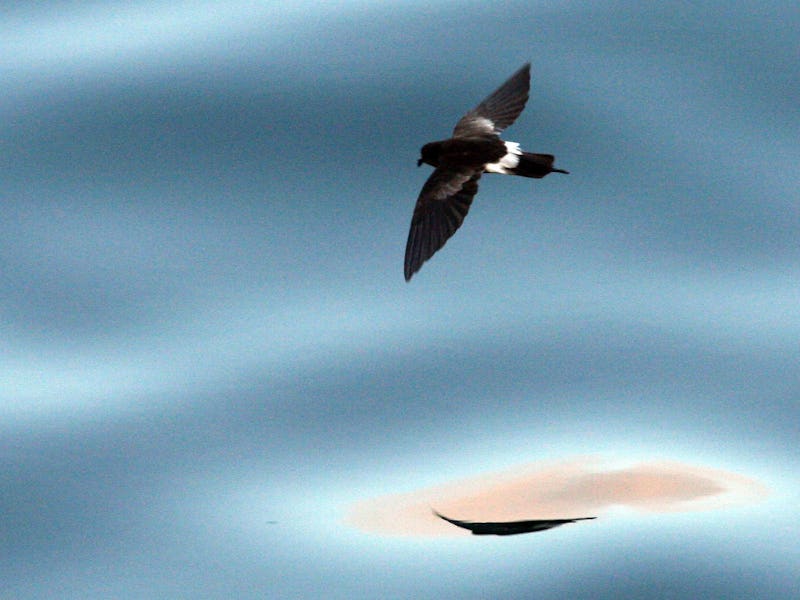Tech Evolution in Darwin's Islands? The Galapagos Adapts to Solar and Wind Power
San Cristobal will live off just a handful of turbines and solar cells.

For the last eight years, 30 percent of the energy used on San Cristobal, the second-largest and second most populous island in the Galapagos archipelago, has come from wind turbines and solar panels. That number is about to go way up. The Global Sustainable Electricity Partnership is spearheading a $10-million investment in clean energy for the island in the hopes that it can model self-sufficiency for both the ecologically unique archipelago and islands all over the world. The hope is that 70 percent of the island’s energy will still come from local renewables.
According to GSEP analysis, the San Cristobal’s existing clean tech infrastructure has already eliminated the need to import 2.3 million gallons of diesel fuel and prevented 23,148 tons of carbon dioxide emissions. The emissions cut is a product of both limiting local generation and eliminating the need for tankers to travel the 621 miles from mainland Ecuador. Those numbers make San Cristobal a model for the other 18 Galapagos islands, which collectively rely on renewables for roughly 20 percent of electricity production, and regions removed from the grid worldwide.
Inverse spoke with Paul Loeffelman Head of Corporate International Affairs for American Electric Power, the utility that represents the private part of this public-private partnership and Luis Vintimilla, General Manager of Eólica San Cristóbal S.A., the local utility that will distribute the new power.
Why is this expansion happening now?
Paul Loeffelman: In March, the current ownership was transferred and so, with new ownership, we considered a second phase. When the United Nations first asked us to help reach the national goal of 100-percent renewable energy on all the islands, we put a team together — that included Luis — and developed the project, developed the engineering, financing, environmental protection, partnership with local utility. Everyone’s quite happy with the status of the project as we’re now handing them the keys.
The Galapagos wind turbines are huge.
A boost in turbine and solar panel output from 30 percent all the way to 70 percent is obviously going to require the installation of new equipment, which is no minor thing given how far the Galapagos islands are from shore. How long do you expect it to take for the project to be operational?
Luis Vintimilla: We’re starting now, with this feasibility study for this second phase of the renewable energy project. As soon as we finish that, we’ll have a timeline. For the time being we can’t provide that information, but we can assume for the first two steps — optimizing the operation of the current system and installing a photovoltaic plant — it will take nine months to one year.
PL: Any time you’re introducing a brand-new technology, what we’ve found is that you have to not only bring hardware but help people learn how to take care of it.
There are already three turbines and two sets of solar panels. How many more will this next phase add? And is this still just on San Cristobal, or other islands in the Galapagos?
LV: As a preliminary, we estimate one additional wind turbine and one megawatt solar plant. For the time being, only San Cristobal.
Healthy avian communities bring in the tourists, making this tiny brown bird a major economic player.
Could other regions of the world replicate what you’ve done?
PL: Every project around the world’s power generation and distribution is unique. You have to optimize which best wind or solar resources provide the best specific environmental protections, and of course the financing has to be right, not just for the project to be built but for it to be maintained. We approached the U.N.’s invitation to do San Cristobal with the idea that we’d do it very well and be very open about our progress and would share these results so people could learn. The good news is, while we had the first wind turbines to be installed anywhere in Ecuador, a second set is now operating on another island. This project is an example of how to put these kinds of things on the ground.
So many countries that signed the Paris Agreement have made significant pledges to reduce emissions, so we hope that this success will draw attention. If we can do it well in the Galapagos, we can do it pretty much anywhere in the world.
These turbines functioned 92 percent of the time over the last eight years — do you expect that same high success rate once this is expanded?
LV: We expect to have at least the same availability, yes. Probably it should be even greater than that.
This has helped in particular to protect one specific bird, right? The petrel, which is a critically endangered species.
PL: We asked biologists, bird specialists, to help guide us in the way that we should study bird populations. That was their highest priority, not only where we could locate the turbines but how we could assist in the propagation and increase of the petrel population generally.
LV: We’ve really had great support for the petrel program from the Galapagos National Park.
But the ecological benefits surely don’t end there. How does limiting fuel importation help more broadly?
PL: The primary reason the U.N. invited us was because of diesel fuel spills from the freighters way back when. We’ve been successful in the sense that we’ve avoided using any more diesel, and that helps aquatic life, which is so important to the Galapagos ecology. But the primary target of protection was the petrel.
This interview has been edited for brevity and clarity.